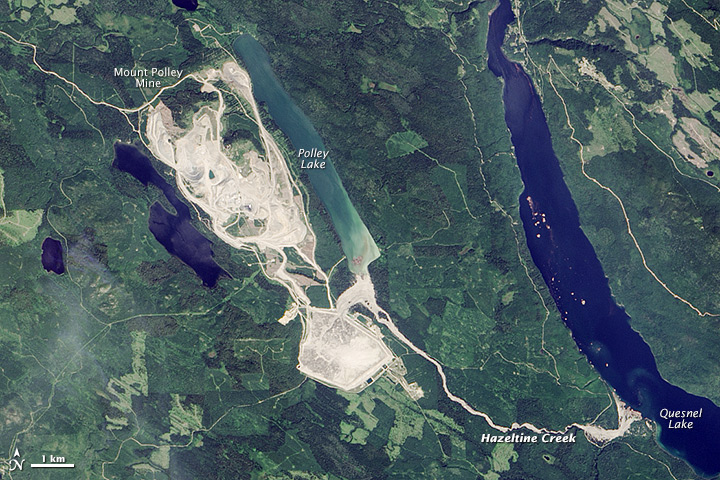The collapse of Imperial Metals’ Mount Polley tailings dam has prompted the Mining Association of Canada to begin an examination on what changes should be made to improve its safety and environmental mine management program.
It was only a few months ago (August 4) that millions of cubic metres of water and tailings that contained toxic metal spilled into Quesnel Lake watershed.
The Conservation Office, the inspector of mines and an expert panel appointed by the B.C. government are investigating the incident.
The cause of the tailings dam collapse is not yet known, according to Pierre Gratton, president of the Mining Association of Canada. However, the association will be assessing its safety management program, which uses a grading system from C to AAA.
The management system looks at energy use, community outreach, and tail management assessment as a means of minimizing a mine’s environmental effect and ensuring its safety.
The collapse of Imperial Metals’ Mount Polley tailings dam was the first incident by a Canadian MAC member in almost two decades. The incident made the safety of mines a top priority, with the Mining Association subject to increased scrutiny over having “poor” standards.

An aerial shot by NASA of Mount Polley after the dam breach in August.
Companies are given four years to establish the safety and environmental management system, however, that might just be too long for tailings facilities.
In the 1990s there were three major tailings dam collapses, which resulted in the association designing specific dam management guidelines. These guidelines are now a key part of the mining management program. The national association is working on getting more mines to adopt these guidelines. Members of the MAC have to adopt its mine management program, known as Towards Sustainable Mining.
In British Columbia there are only two mining companies that have implemented the system and report their grades for tailings dams.
The Teck’s Highland Valley copper mine currently has an AAA rating, which is the highest rating for tailing management.
Anything above a single A rating is considered to be good practice.
Imperial’s Mount Polley gold and copper mine did not complete the four-year implementation, therefore no results (regarding management ratings) were reported.
Bill Bennett trying to regain Alaskan confidence in BC mining projects
British Columbia’s Energy Minister Bill Bennett is currently in Alaska to try and gain back Alaskan confidence in the provinces’s mining industry, which was severely dampened after the Mount Polley mine disaster.
Alaskans are concerned about the tailings dams that will one day accompany open pit mines proposed in the wild river watersheds that both BC and Alaska share, such as the Unuk, Taku and the Stikine.
Alaska asked the Canadian government to be more involved in the regulation of the Red Chris project, a copper and gold project in northwest B.C. The mine is nearly complete and located near the Iskut River – a tributary of the Stikine River – which ends in southeast Alaska and home to one of the largest salmon habitats in the Tongass National Forest.
Bennett told the Canadian Press:
“All of a sudden we have now a potential issue with Alaska given that many of these (mine) projects are located in B.C. watersheds that ultimately flow into Alaska watersheds,”
